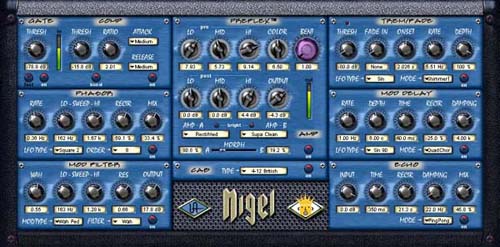
 |
"One of my favorite tricks is using Preflex, the amp/cabinet section of Nigel to simulate one amp playing into multiple cabinets."
This can be done in any application, and requires one audio track, and at least two aux (or group) tracks. Here are the steps to set this up:
Now you are playing one amp through two different cabinets. Add a third aux and you’ve got three cabinets. Since the cabinet section takes very little DSP, there is very little CPU hit to the UAD-1 as you add more cabinets. Try adding a Pultec and 1176 after each cabinet, or buss the outputs of all the cabinets to one aux track for global EQing and compression.
If you're overdubbing on a full mix, you might find that you need to keep your ASIO buffer size high enough that the latency induced by all of these plug-ins makes this difficult. The best solution is to bounce a stereo mix of your song and import it back into the session and overdub the guitar to this track. This way you can mute all the other tracks and bypass any host-based plug-ins, greatly reducing the load on the host CPU. This should allow you to reduce your ASIO buffer down to a size that will make overdubbing possible.
Questions or comments on this article?